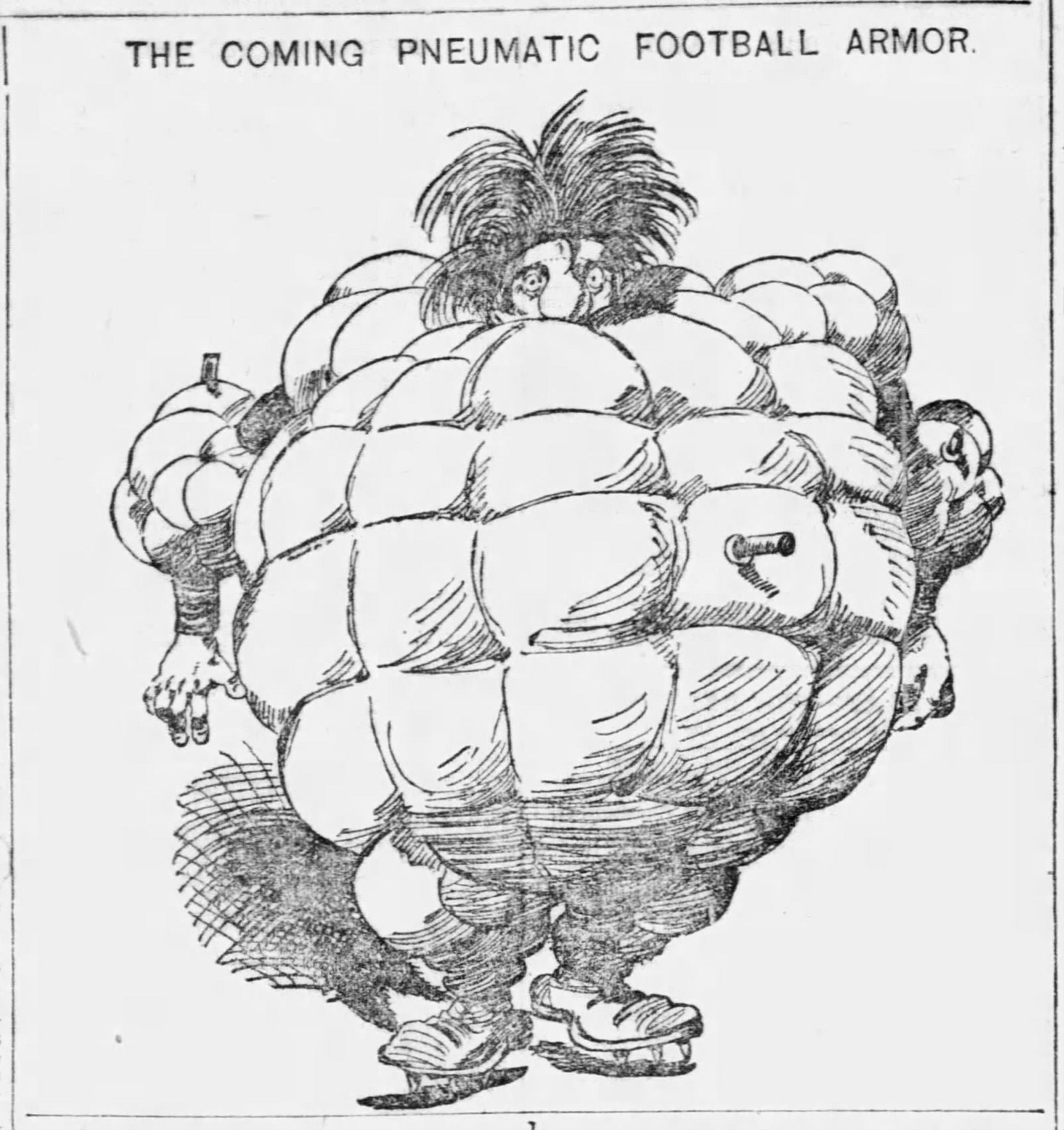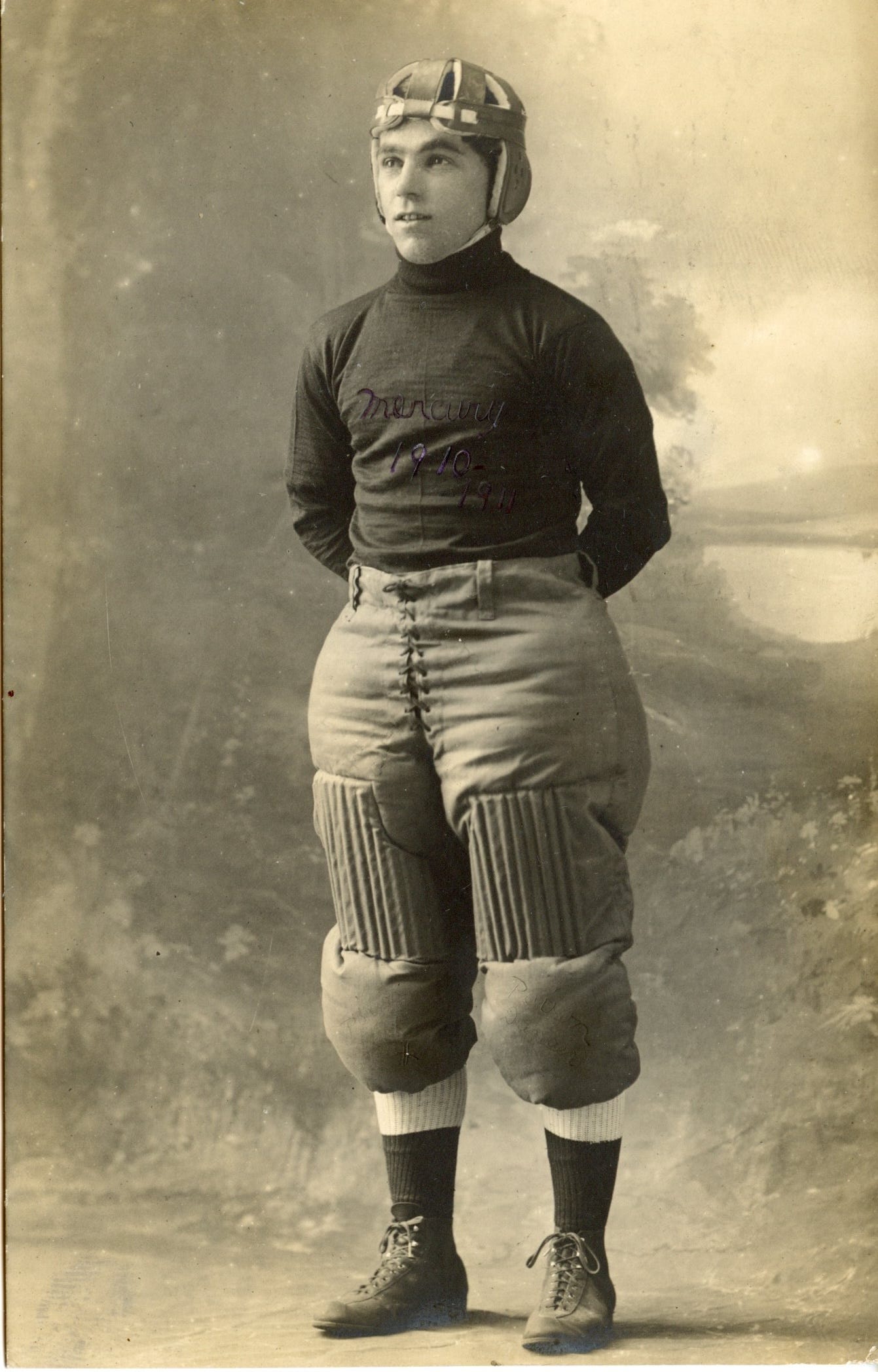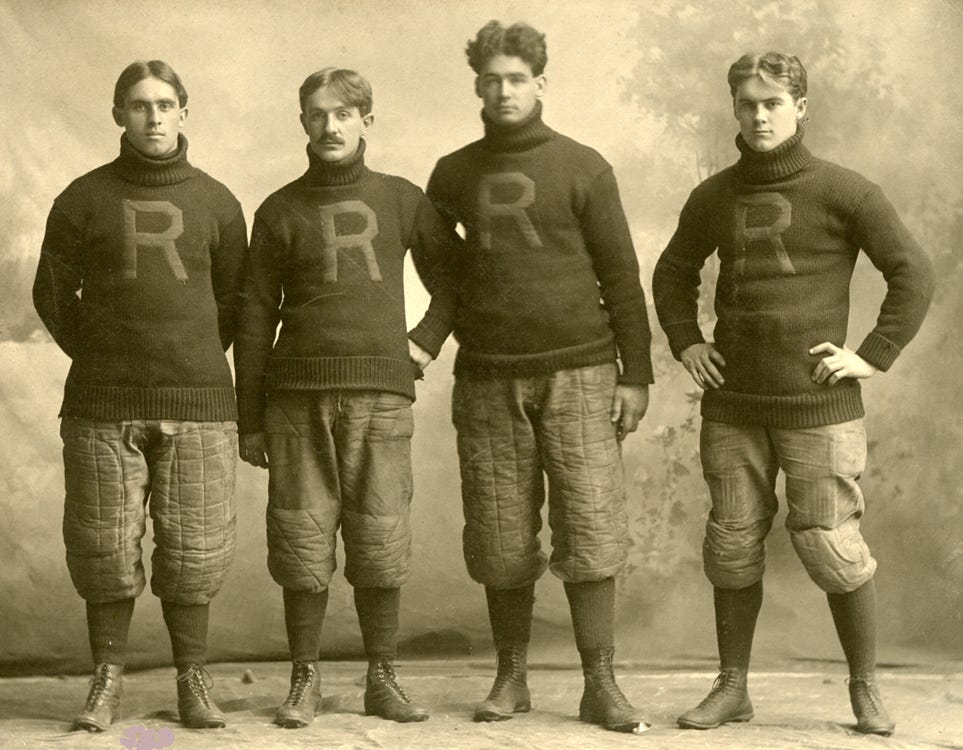Today's Tidbit... The Days of Baggy, Bulbous Pants
With the 1906 rules allowing the forward pass and liberalizing the onside kick from scrimmage, football was supposed to shift toward an open game leveraging speed rather than power. Not everyone bought into the idea, but more and more did over the next few years.
The desire for more speed led players and teams to shed as much equipment and pads as they could to reduce the weight they carried in games. The canvas pants padded with felt added pounds to the gear through sweat absorption, and things got worse on rainy days. Of course, there was the manliness factor, as expressed by Steve Farrell, Michigan trainer:
The only thing we know of that will prevent ALL such injuries is a feather bed, and a football player would not be able to travel at quite his usual speed if he had a feather bed bound around him. Moreover, it has been noticed that the fellows who wear the most armor –shin guards, nose guards, head gears, pads, etc.- generally are the worst players. On the best team of its size that we can recall all the members wore unpadded pants, jerseys, and vests …Nary a headgear, nary a nose guard, nary a pad, and yet this team went through two seasons without a single serious or even severe injury. Talk about the fearful brutality of football; if all the teams would keep in as good physical condition as the bunch in question did, there would a very few names on the so-called "casualty lists.”
Monty, Gridiron Heroes are Rapidly Crowding to the Front – Close Contests Expected,' Ogden Standard, September 20, 1913.
Of course, there are always exceptions or those who shed some pads and not others. Around 1910, some players wore little or no padding on the upper body, yet they wore pillowy pants so stuffed with padding they looked like Bibendum, better known as the Michelin Man.
Some might have enhanced their leg musculature by diligently hitting the gym on leg days and skipping upper body days, but mostly the puffy pads made the visual.
Bibendum looks surprisingly like a cartoon figure featured in stories from the late 1890s when mad scientists designed pneumatic football pads that were seldom used and often parodied.
The pants worn in the 1910 era did not use pneumatics. Their protective qualities came from good old-fashioned felt, horsehair, and cane. The image below shows the poster boy for the Bibendum pants look.
He played for the Mercury Athletic Club, an independent team in the Buffalo area. The unnamed player had the RPPC's studio picture taken in 1910 before they beat Nichols High 7-0, a significant victory for the clubbers. Despite our boy being smart enough to wear padded headgear, he matched a padless upper body with voluminous pants, cane thigh pads, and stuffing everywhere else.
He wasn't the only one to sport such an outfit. Charles Dillon of Carlisle opted for massive pants in 1912, but they did not slow him down. Dillon played guard, and rather than give the ball to Jim Thorpe on a kickoff return or keep it himself, quarterback Jimmy Johnson executed the hidden ball trick, stuffing the ball under Dillon's shirt. After that, Dillon and his big pants ran unimpeded down the field for a touchdown.
Others before and after Dillon wore baggy pants with more padding than needed in some spots and not enough in others.


The baggy pants era was largely over by 1920 as the manufacturers focused on pant designs with less padding overall that kept padding in key locations. Lacking elastic fabrics, manufacturers added laces to keep the thigh pads in place. These can be recognized by the leather reinforcements for the laces on the front of the thighs.
They also began cutting the pants for a more streamlined or tailored look. In the 1920s, airplane cloth and silk were substituted as the fabrics of choice before artificial fabrics and blends emerged in the 1930s.
Click here for options on how to support this site beyond a free subscription.







